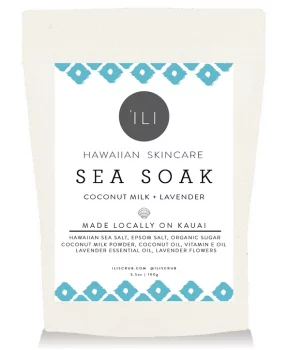As we’re right in the middle of the Muslim holiday of Ramadan — which, this year, occurs from May 5th to June 4th — Nécessité wanted to explore the concept of fasting. Fasting is famously one of the five pillars of Islam and sits at the center of Ramadan celebrations, and yet, so many misunderstand it. When you look a little closer, though, it becomes clear that fasting is more than just a “Ramadan thing” — it’s actually the bridge that unites us all.
Almost every religion has its own form of fasting, tied to a special holiday or time of year — from the Muslim celebration of Ramadan, to the Christian observance of Lent, to the Jewish tradition of fasting on Yom Kippur. Even the medical and wellness communities have taken to fasting; albeit, not in the name of “salvation” or “repentance,” but in the name of overall health.
Ahead, five types of fasting to know about and the history and benefits behind each.
Ramadan Fasting
Once a year, observant Muslims fast from sunup to sundown throughout the entire month of Ramadan. It’s not just about avoiding food and water, though; strict Muslims also avoid other “indulgences” like having sex or even gossiping during daylight hours. Before the sun rises, participants can have “suhoor,” a meal packed with energy-boosting foods; after the sun sets, it’s time for “iftar,” a family feast.
In the Qur’an, the reason for fasting is noted as such: “Fasting is prescribed to you as it was prescribed to those before you, that ye may (learn) self-restraint.” In addition, Muslims observe the daylight fast in order to learn gratitude, seek spiritual introspection, and develop a closer relationship with God.
Yom Kippur Fasting
Yom Kippur is also known as “the Day of Atonement.” According to the Torah, fasting on the Jewish holiday of Yom Kippur is an opportunity for Jews to “practice self-denial” — in other words, to learn the virtues of sacrifice. It’s actually not dissimilar to Ramadan in this way: The 25-hour fast during Yom Kippur provides an opportunity for self-reflection and self-discipline, and asks participants to recommit to living a holier, more ethical life once the fast is broken. This is why it’s often customary for Jews to wear white on the holiday; it symbolizes a fresh start.
Lent Fasting
Fasting isn’t quite as strict in the Christian tradition, but it’s still an integral part of the observance of Lent, the 40-day period leading up to Easter, when Jesus is thought to have risen from the day. On Ash Wednesday and Good Friday, Christians are supposed to give up meat and limit their other food intake to one large meal per day. It’s expected that they will abstain from meat eating on all Fridays during Lent, as well. Additionally, it’s customary for practicing Christians to “give something up” for Lent — such as candy, smoking, or another not-so-great habit. The objective? “Penance,” according to the Church. Much like Yom Kippur, it’s a time of repentance; and like Ramadan, it’s a time of self-sacrifice. The fasting ends on Easter Sunday.
Water Fasting
Fasting can be more than a “spiritual cleanse” — it can be a physical cleanse, too. The health-conscious have found that fasting has some major wellness benefits; from clearing “brain fog,” to detoxing the body, to healing the digestive system. Water fasting is a popular method, which is just what it sounds like: Consuming only water for a period of 24 to 72 hours. (Some water fasts last longer than that, although it’s not medically advised.)
A few studies have been done on the benefits of water fasting, which showed that the practice may lower your risk of cancer, heart disease, and diabetes; increase metabolism; stimulate autophagy, a process that helps the body recycle its own cells; lower blood pressure; and even prevent free radical damage. There are some risks, though. Water fasting can make some pre-existing conditioners (heartburn, diabetes, kidney disease) worse. The bottom line: Do your research.
Intermittent Fasting
The trendiest type of fasting, without a doubt, is intermittent fasting — i.e., alternating cycles of fasting and eating. There are a few different ways to incorporate intermittent fasting into your routine, but the most popular is the eight-hours-on, 16-hours-off method. This means that eight hours of your day (usually, from 12pm to 8pm) counts as “eating time,” where you can eat however and whatever you’d like. The next 16 hours (from 8pm to 12pm the next day) are for fasting. During the fasting period, water, coffee, and tea are allowed.
This technique is more of a long-term lifestyle than a quick-and-dirty fast. People who partake in IF report higher energy levels, weight loss, and a clearer mind. Studies have shown that the lifestyle can add years to your life, and protect against heart disease, diabetes, cancer, and Alzheimer’s. As long as you’re spending your eight-hours-on with healthy foods, there are virtually no downsides to intermittent fasting.
The moral of the story? Fasting does a body — and soul — good.
Photographer Credit: Syed Yaqeen




















